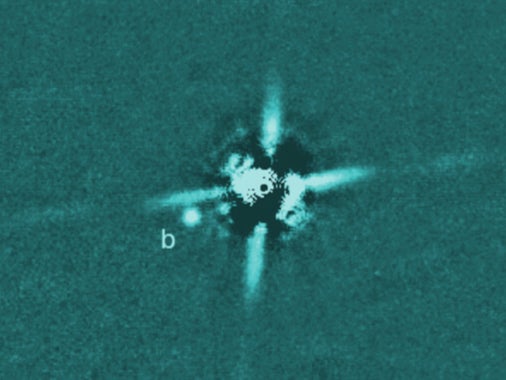Scientists find one of the youngest planets ever
The planet is only a few million years old and is several times larger than Jupiter

Your support helps us to tell the story
From reproductive rights to climate change to Big Tech, The Independent is on the ground when the story is developing. Whether it's investigating the financials of Elon Musk's pro-Trump PAC or producing our latest documentary, 'The A Word', which shines a light on the American women fighting for reproductive rights, we know how important it is to parse out the facts from the messaging.
At such a critical moment in US history, we need reporters on the ground. Your donation allows us to keep sending journalists to speak to both sides of the story.
The Independent is trusted by Americans across the entire political spectrum. And unlike many other quality news outlets, we choose not to lock Americans out of our reporting and analysis with paywalls. We believe quality journalism should be available to everyone, paid for by those who can afford it.
Your support makes all the difference.Scientists have found one of the youngest planets ever discovered, having only been formed a few million years ago.
The planet, 2M0437b, is several times larger than Jupiter and emerged out of the darkness around the same time as the Hawaiian Islands on Earth. It is also so young that it still radiates heat from its formation, as much as lava from an erupting volcano.
“This serendipitous discovery adds to an elite list of planets that we can directly observe with our telescopes,” explained Eric Gaidos, a professor in the University of Hawaii Mānoa Department of Earth Sciences whose research was published in Monthly Notices of the Royal Astronomical Society.
“By analysing the light from this planet we can say something about its composition, and perhaps where and how it formed in a long-vanished disk of gas and dust around its host star.”
Planet 2M0437b was originally spotted in 2018, with researchers monitoring the position of its host star as it moved across the sky. It took three years to confirm that 2M0437b was indeed a planet and not a more distant object because of how slowly its companion star moves across the sky.
Observing the planet and its star was made easier by the fact that it is on a much wider orbit than most plants in our solar system – moving from its star at a distance one hundred times greater than the Earth and our Sun (approximately 15 billion kilometres). However, there was still a great amount of “adaptive” optics necessary to compensate for image distortion caused by Earth’s atmosphere, the researchers said.
“Two of the world’s largest telescopes, adaptive optics technology and Maunakea’s clear skies were all needed to make this discovery,” said co-author Michael Liu, an astronomer at the Institute for Astronomy.
“We are all looking forward to more such discoveries, and more detailed studies of such planets with the technologies and telescopes of the future.”
Join our commenting forum
Join thought-provoking conversations, follow other Independent readers and see their replies
Comments